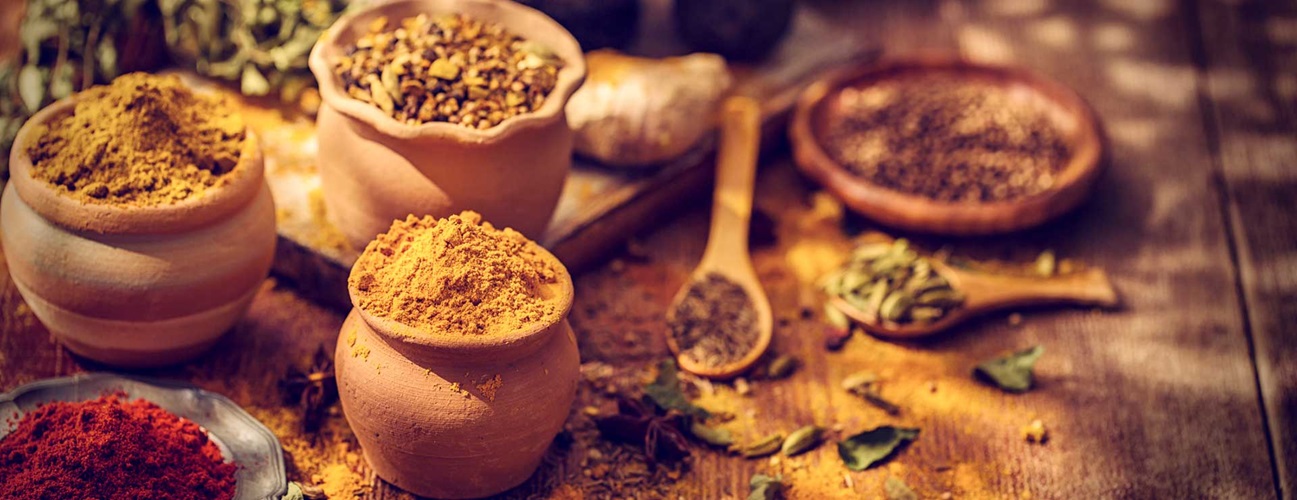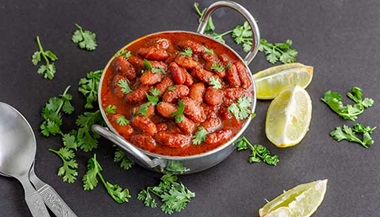5 Spices with Healthy Benefits
Another night of grilled chicken breasts is good for your diet, but it’s also kind of boring. Spicing up a plain-but-healthy meal is good for your taste buds and your health. Reach for your spice rack and you’ll not only up the flavor of your food, but you’ll also get a boost of antioxidants (substances that protect cells from damage).
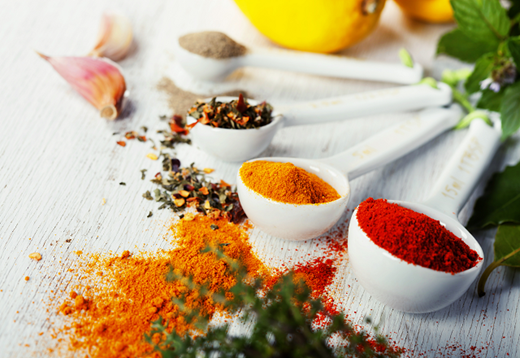
Nutrition researchers say that there are more than 100 common spices used in cooking around the world, and some have proven to be concentrated sources of antioxidants — substances that protect your cells from damage.
There’s no need to go on a massive hunt for exotic ingredients — some of the best spices can be found at your local market.
One note: Most studies that show benefits use supplements to control the dose of spice (or the spice’s active compound) that participants consume. Often these provide bigger doses than you’d normally eat in a day.
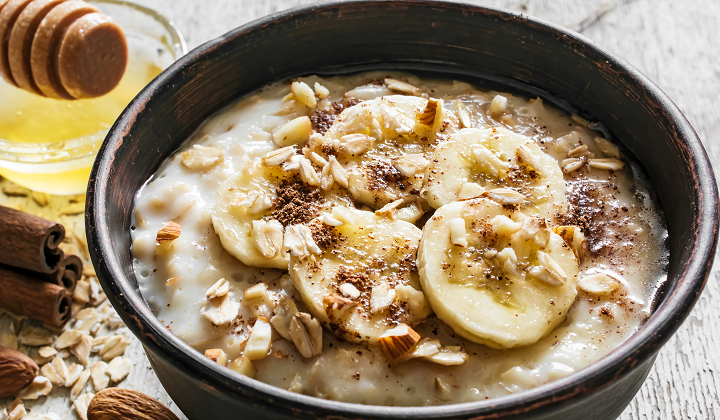
1. Does cinnamon lower blood sugar?
Studies say yes. This popular spice comes from the bark of the cinnamon tree and is used in everything from pumpkin spice lattes to Cincinnati chili. Cinnamon is especially great for people who have high blood sugar. It lends a sweet taste to food without adding sugar, and studies indicate it can lower blood sugar levels in people with type 2 diabetes.
Cinnamon may also provide heart-healthy benefits, such as reducing high blood cholesterol and triglyceride levels. That’s especially important for people with diabetes who are at greater risk for developing heart disease.
Cinnamon is not a replacement for diabetes medication or a carbohydrate-controlled diet, but it can be a helpful addition to a healthy lifestyle.
Meal tip: Try sprinkling it on yogurt, fruit or hot cereal, or use it in stews and chilis or as a meat rub.
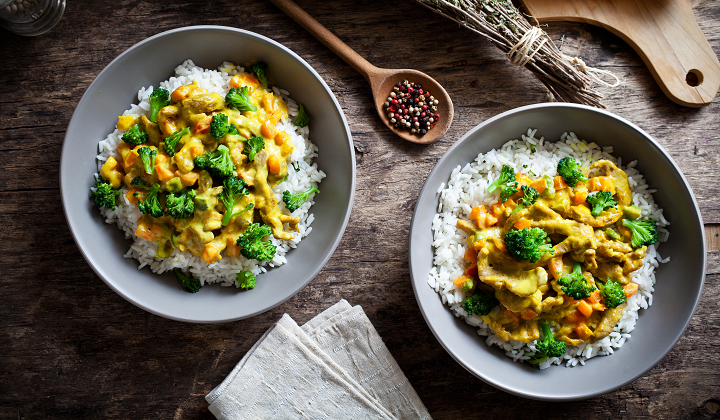
2. Can turmeric reduce inflammation?
Turmeric is best known for its use in Indian curry dishes and has become a trendy superfood for its ability to reduce inflammation — a common cause of discomfort and illness.
One of the components of turmeric is a substance called curcumin. Research suggests it may reduce inflammation in the brain, which has been linked to Alzheimer’s disease and depression. In a small study of adults over 50, those who consumed curcumin supplements over the course of 18 months had improvement in memory test scores. They also reported being in better spirits. Most impressive? Scans of their brain indicated significantly fewer markers associated with cognitive decline.
Because of its anti-inflammatory qualities, curcumin is also effective at reducing pain and swelling in people with arthritis. And animal studies indicate that curcumin could have powerful anti-cancer properties. A Johns Hopkins study found that a combination of curcumin and a chemotherapy drug was more effective at shrinking drug-resistant tumors than using chemotherapy alone.
Meal tip: Want to add this powerhouse spice to your diet? Rub it on roasted vegetables and meats, sprinkle it in tacos or create a curry.
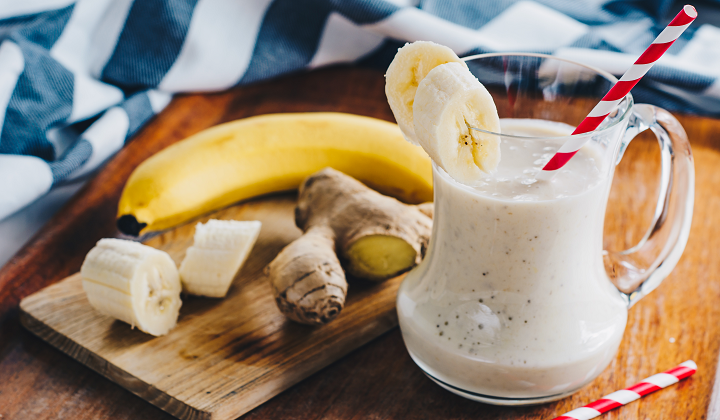
3. Can ginger get rid of nausea?
Ginger is a tropical plant that’s been used in Asian cultures for thousands of years to treat stomach upset, diarrhea and nausea. In the U.S., it comes in a variety of convenient forms — lollipops, candies, capsules and teas. You can also purchase the dried powder in the spice aisle of the grocery store, or buy it fresh to make teas or grate into recipes.
Research has found that ginger is effective at calming pregnancy-related nausea and reducing tummy upset after surgery. Some studies have also found that ginger cuts the severity of motion sickness or prevents the symptoms altogether. It may even help with chemotherapy-induced nausea and vomiting when taken along with anti-nausea medications. (Ask your doctor first before taking ginger while on chemotherapy drugs, as it can have a negative interaction with certain medications.)
Meal tip: Work this zingy spice into your diet by adding it to stir-fry dishes, smoothies or sipping it in tea. You can also add it to homemade salad dressings and baked goods.
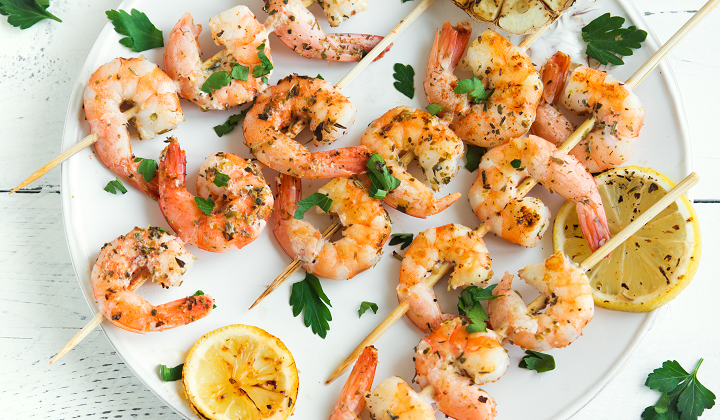
4. Is garlic good for your heart?
Most of us are familiar with garlic, the strong-smelling bulb frequently used in cooking. But what you might not know is that eating garlic may protect your heart from changes that lead to heart disease.
As you age, some hardening of the arteries is normal. This is called atherosclerosis and occurs as fatty deposits made up of cholesterol and other substances build up on the inside of your artery walls. Factors such as smoking, high blood pressure and high cholesterol can make it worse. As the build-up increases over time, the arteries narrow. This can make you susceptible to heart attacks and strokes.
Researchers have linked garlic intake with keeping blood vessels flexible, especially in women. In addition, studies suggest that eating garlic may reduce cholesterol and triglycerides.
Garlic is a key ingredient in the Mediterranean diet, an eating style that heart doctors often recommend. It can be used in any number of savory dishes.
Meal tip: Pair fresh or powdered garlic with olive oil and pepper to flavor vegetables or use it with rosemary to make a tasty meat rub. You can sprinkle it in soups and salad dressings, too.
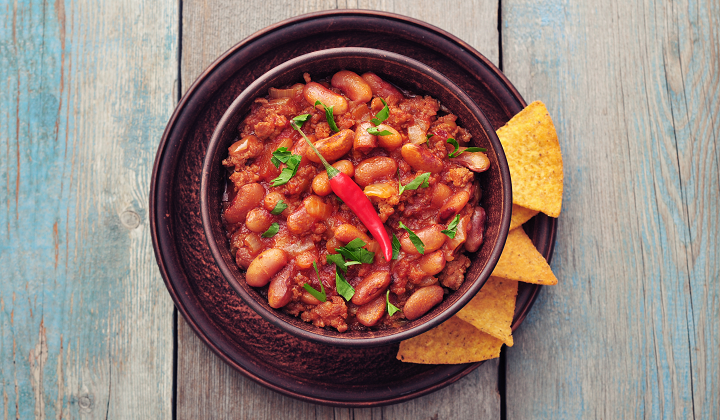
5. Can cayenne relieve pain?
Cayenne is a type of chili pepper that you’ll find in Southwestern American cuisine as well as Mexican, Creole and Cajun dishes. Cayenne peppers contain a substance called capsaicin. It’s what makes them spicy and also what can provide pain relief.
Capsaicin reduces the number of pain signals sent to your brain. The result? You don’t register as much discomfort. It works on pain caused by arthritis and diabetes-related nerve damage. You can apply creams with capsaicin directly on joints and muscles.
Lab research and studies in animals suggest that eating cayenne pepper can also help with something that causes a lot of internal pain: ulcers. Although people often associate spicy foods with stomach upset, capsaicin aids in helping reduce ulcers by restricting the growth of an ulcer-causing bacteria (Helicobacter pylori or H. pylori), reducing excess stomach acid and increasing blood flow.
Meal tip: Use this spice anytime you want to add heat to your food. It’s great in chili, soups, stews and on meat. For a fun twist, add a dash to hot chocolate.
Healthiest Ways to Use Spices
Whether you use spices fresh or dried, you’ll still get beneficial compounds. Experts point out that frying or grilling can decrease spices’ antioxidants while microwave cooking, simmering or stewing foods with spices can actually heighten their antioxidant levels.
If you’re tempted to take supplements to increase your dose of these beneficial compounds, it’s important to note that commercial supplements aren’t strictly regulated, which means you can’t be certain what the pills actually contain. Certain third-party organizations do testing to verify quality and contents of supplements. If you’re thinking about taking a supplement, talk to your doctor or dietitian about what form and amount is right for you.
Regardless of the other health benefits, spices add flavor to food and can make healthy meals delicious and are a healthy way to get you out of an eating rut. Enjoying your food is key to maintaining healthy habits for the long term. Be sure to talk to your doctor or a dietitian before changing your diet.
Try this: Stewed Chicken
We often associate cinnamon with sweet foods, but it works in savory dishes as well, like this stewed chicken. Try this sweet and savory recipe:
Ingredients:
- 1 tablespoon olive oil
- 1 pound chicken breasts
- Salt (optional) and pepper
- 3 cups chopped vegetables of your choice. We like spinach, carrots and onions. Fresh or frozen will work. Frozen are often cleaned and cut for you, which can save time.
- 1 14.5-oz can or box diced tomatoes
- ½ teaspoon cinnamon
- ½ teaspoon cayenne
- ½ teaspoon turmeric
- 1 teaspoon cumin
- Fresh or dried parsley for garnish (optional)
- Rice or couscous for serving (Cooking times vary, so make sure you plan accordingly so it is ready when the chicken is done.)
Directions:
- Heat the olive oil in a large sauté pan. Sprinkle the chicken with salt (if desired) and pepper and add to the pan. Brown each side of the chicken.
- Add the vegetables to the pan and sauté until soft, 5-10 minutes.
- Add the tomatoes, cinnamon, cayenne, turmeric and cumin. Simmer until chicken is cooked through (to 165 degrees Fahrenheit) and vegetables are soft, about 20 minutes.
- Top with parsley (if desired) and serve with rice or couscous.
Other Healthy Recipes:
- Southeastern Fresh Ginger Asian Chicken Noodle Soup (includes ginger and garlic)
- Teriyaki Chicken and Mango Salad (includes ginger and garlic)

